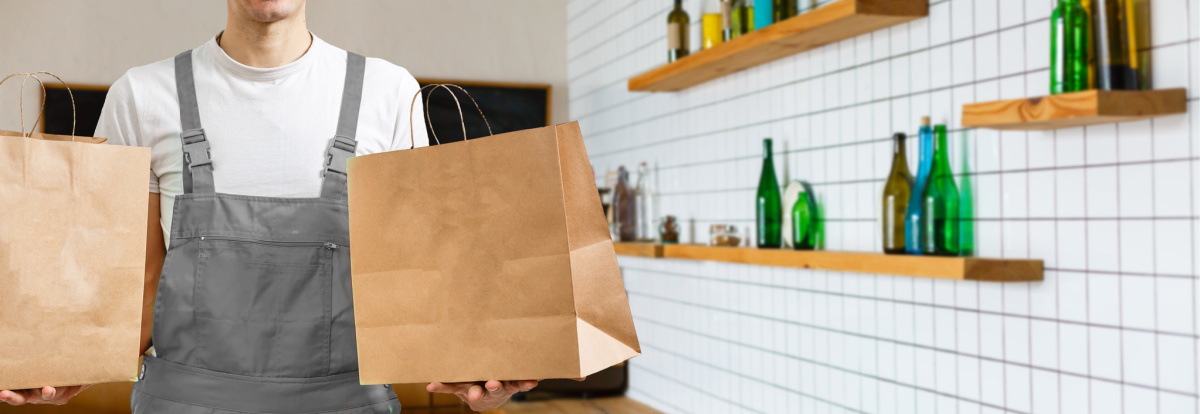Savvy Restaurateurs Reinventing as Grocerants
3 Min Read By Ben Zifkin
In 2019 it was widely reported that Americans were making less and less meals at home, and with that we saw the rise of grocery stores and retailers across the country begin to offer dine-in experiences to attract customers. In fact, restaurants have become one of the most successful ways for retailers to stand apart. Restaurants faced new competitors.
Then the pandemic hit and the industry faced a new reality where 85 percent of independent restaurants could close by the end of 2020, according to the Independent Restaurant Coalition. Restaurant owners across the country closed their doors, Americans stayed home to practice physical distancing and the country faced economic uncertainty like it hasn’t seen in years.
Small businesses were arguably the most impacted by lockdowns brought on by COVID-19, and restaurants are some of the hardest hit. The National Restaurant Association estimates a loss of $25 billion in sales, forcing many to start thinking beyond their walls. What started as a means to get rid of already purchased stock at the beginning of the pandemic has led to many restaurant owners realizing they might be onto something with new revenue streams to offset their losses.
In an effort to support local businesses and their favorite eateries, many Americans are choosing to buy grocery products from restaurant owners who find themselves unable to open to dine-in services due to social distancing and subsequently, struggle to keep their business afloat. Many of these restaurants have established credibility in their communities and many people are looking for ways to support one of the sectors hardest hit by this crisis. The idea of selling packed food and groceries has not been foreign to larger restaurants but smaller independent operators traditionally were not very receptive to the idea, until now.
We have seen 341 percent growth in restaurants signing up to the Hubba platform to begin selling groceries in their space (quarter over quarter). Restaurants who’ve gotten into grocery are seeing significant early success – with Hubba seeing a ~250 percent spike in re-order traffic (meaning the customer orders more of an item because it sold out) in May vs. previous periods.
The Proof is in the (Artisan) Pudding
Café 1948 started as a small mobile trailer in Tyler Texas by Samuel and his wife in 2015. They had planned to expand, but as timing would have it, their flagship location opened right at the start of the pandemic. Without dine-in customers, Cafe 1948 chose to provide customers with pantry and grocery products to make up for losses. By studying buying trends from larger grocery stores to predict certain habits and identify food trends they were able to pick the right products and market the right way to local customers. Samuel and his wife ultimately began seeing an estimated 35 percent rise in their weekly gross income in the middle of pandemic – adding grocery products made that possible. They are the only ones with Hubba products in their city, and say people are blown away with the uniqueness of them all.
“People wanted a place where they feel safe and know they can purchase their daily and weekly grocery needs,” Samuel, owner Café 1948.
Many restaurants across the country are finding success by offering packaged food products that are unique and align with their menu, tapping into a market of Americans who are not compromising on dietary lifestyle choices. According to a June 2020 report from IRI® and SPINS®, consumers are purchasing more natural products in 2020, both pre-COVID-19 and during the current pandemic. While the pandemic has seen many customers prioritize ‘value’, at the same time there is a continued focus on healthy choices including plant-based foods, Keto products, whole foods etc.
Local Love – and Convenience – Wins
‘Grocerants’ – restaurant owners offering grocery as a service to the local community – is truly a win-win for the customer and merchant. Consumers can show their support for the community by shopping local, benefiting from the added value of convenience and can find unique, often artisan or diet-friendly products that are otherwise not available to them in big box stores, which merchants can sell off their stock, build lasting relationships with customers and of course, grow the business through a new revenue stream.
As the world continues to shift and there is much unknown, both restaurants and grocers will need to continue to innovate across multiple modes to meet customer needs that include customer and staff safety, reinventing space utilization, and delivery models.


